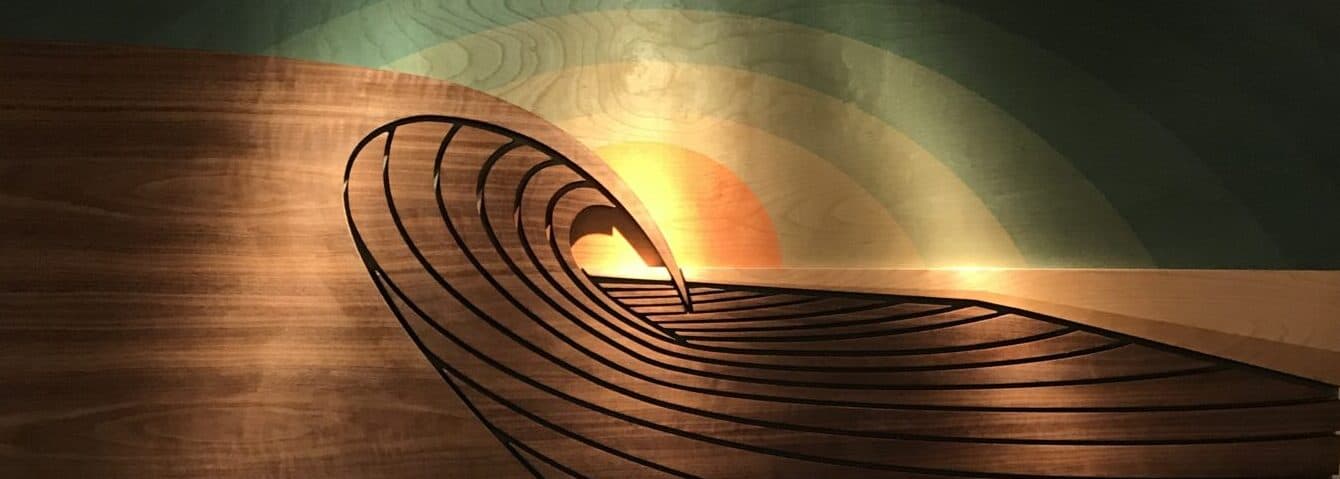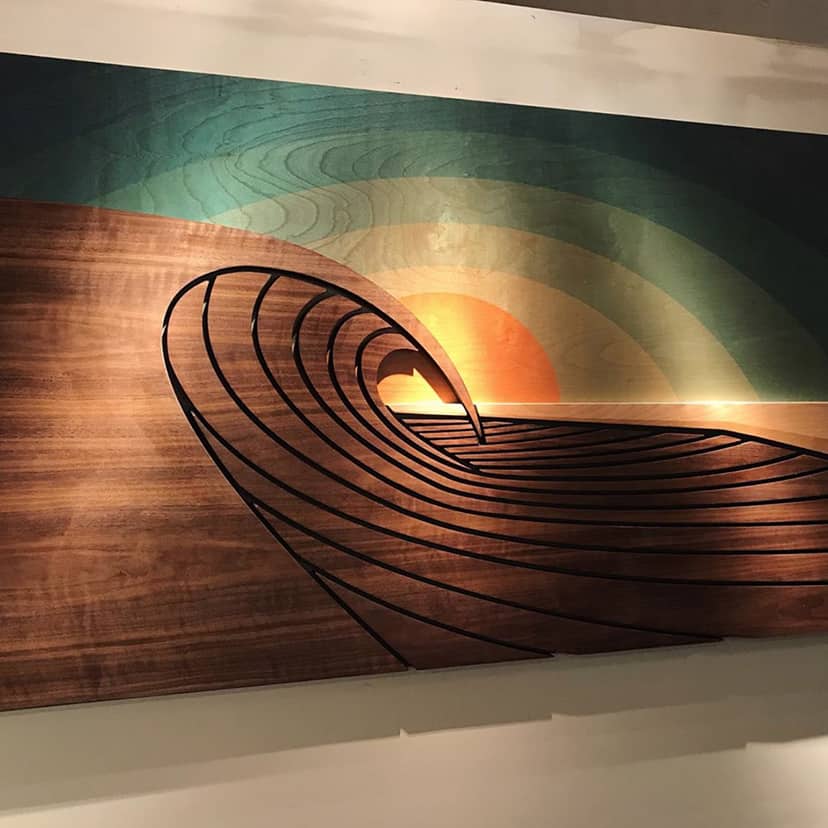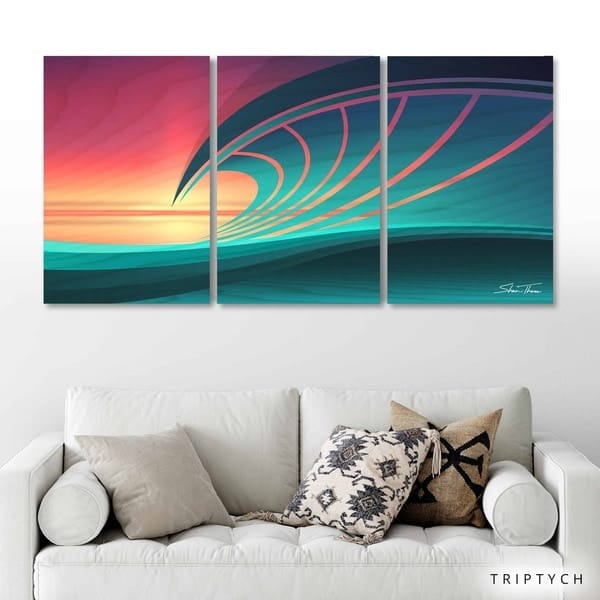
The power of the water pushing from behind. The build-up of speed and setting the stance on the board. Now you are free to ride the wave as it roars, rises, and crests behind you, then reaches its peak. You race through the hollow to beat the wave as it crashes down after you. There is no one with you as you dare to defy the water and the waves. It is you, the board, and the one wave on this tremendous journey of strength, balance, and exhilarating energy.
This is the special experience artist Shaun Thomas wants to share with viewers, so they can get that same feeling, vicariously, that he has experienced throughout his life. His specialty is in depicting the curves of waves through his wave art sculptures in different interpretations.

Energy in Stillness
Envision the experience of riding this wave as you gaze at it for a while. The energy coming from behind to build the wave is represented in the solid birch wood front overlay, stained to add unique definitions to the natural grain and ripples. The direction of the wood grain moves across from left to right, representing the force of the water pushing the wave to its crest and then curling over to plunge to the bottom. It is in this best part of experiencing a wave, that the magic holds its breath, forever immortalized in an infinite curved moment. Black curved shiny lines meet on the curve of the wave, giving a depth and perspective of distance that moves from the front of the picture, around to behind the wave as it breaks. The lines, from right to left, indicate the recession of the water from the beach line, heading back towards the wave as it breaks and rumbles towards the beach.Sunset on the Horizon
Inside the tunnel, a shadow under the lip gives the wave a depth, as if to lead the viewer towards the waiting sunset at the other end. As evening comes in from behind, rays of the sun on the horizon shine brightly, highlighting parts of the water and far-off beach. Dark blues of the sky become lighter in stages as the sun stays in view at the edge of the world for just a little longer. You are led towards the last warm light of the day after surviving the force of the wave. The energy of waves gives way to calm and peacefulness with the light of the sun.


